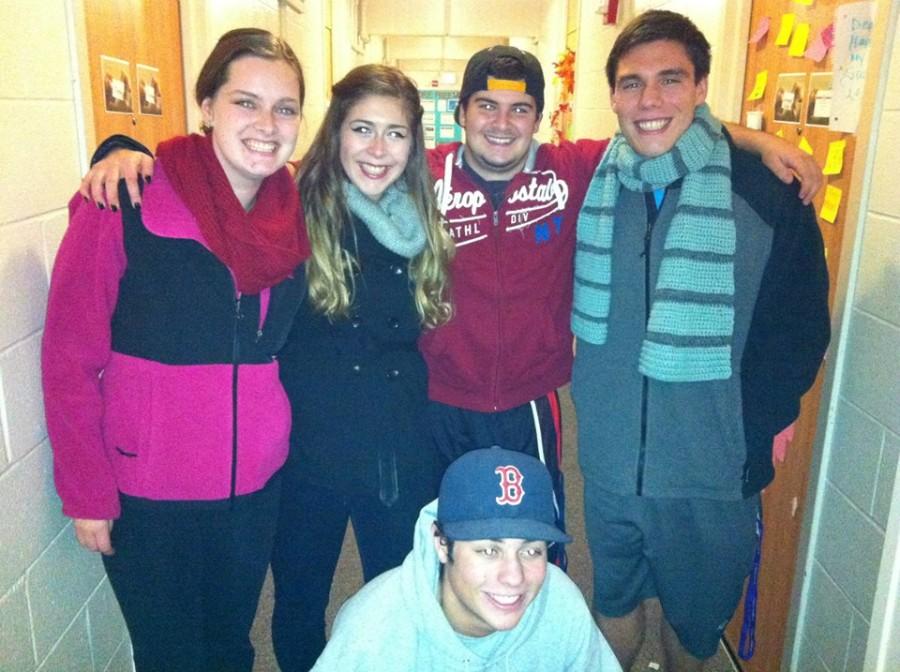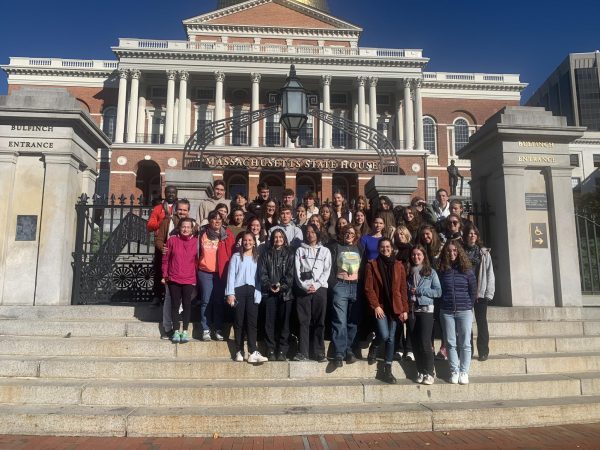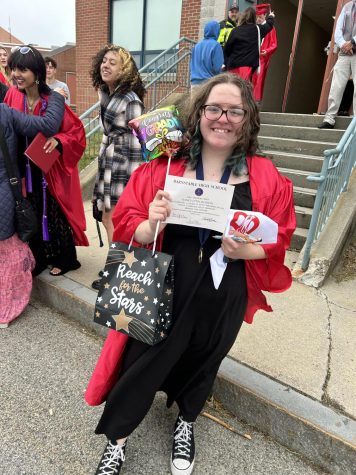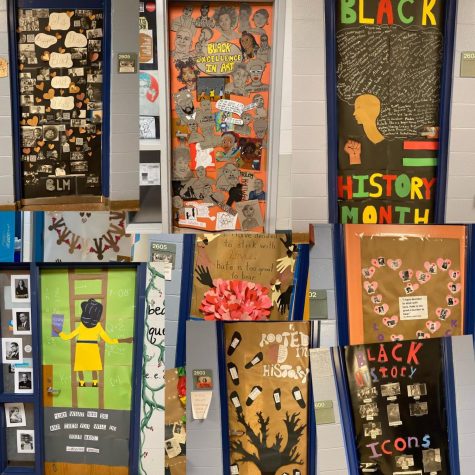The College Experience
Insight Alums Share Stories of Freshman Life
Photo by Contributed by Richie Carter
Richie Carter, far right, stands in his dorm hallway with some of his new college friends.
May 6, 2014
As the school year draws to a close, a majority of seniors prepare for the college journey. BHS graduates Jillian Cahoon, Russell Brillant, and Richie Carter recently shared their experiences as college freshman with Insight. Cahoon attends Fairfield University in Connecticut, Brillant attends Bridgewater State College, and Carter attends University of Massachusetts Amherst.
Various factors are involved with choosing your future college. Distance and location were large factors for choosing a college for Cahoon, who majors in communication. Her favorite class is mass media.“[My college is] three hours away from my home, and it is close to the city,” said Cahoon.
Brillant chose a school closer to home. “[My college is] close to home, cheap, and Bridgewater State School is the best state school.”
“Putting yourself in ridiculous debt doesn’t make for a great life,” added Carter.
At all three of these colleges, students are allowed to stay in college dorms throughout all four of their years. However, at UMass, dorms are only guaranteed for both first and second year students. According to Carter, third and fourth year students are encouraged to live off campus for the remainder of their college years.
Brillant studies political science and loves his public speaking class. He wished he was “aware of the financial aid process, class selection process, [and] advising process,” while going through the college process. Carter said he wished “high school teachers had said that college is easier than high school.” Carter, who is aiming for a degree in both history and journalism elaborated by saying it is “not about the work load, [but] time management.”
According to Cahoon, class sizes are relatively the same to those of high school at Fairfield University. Carter expressed that class size depends on the type of class, and can vary from six to 300 students.
Other differences with college and high school are a flexible wake time and independence from parental restrictions accompanied with large amounts of time between attending classes. With large amounts of time unoccupied, students tend to gather at cafe shops, dining halls and various restaurants around the campus, according to both Cahoon and Carter.
Unlike the back to back class schedule of high schools with only a few minutes of break time, college break times vary.
Cahoon appreciates many aspects of her college. “I like the classes, they are big enough to meet new people.” On the other end, Brillant dislikes “the lack of communication with administration and students” at his college.












